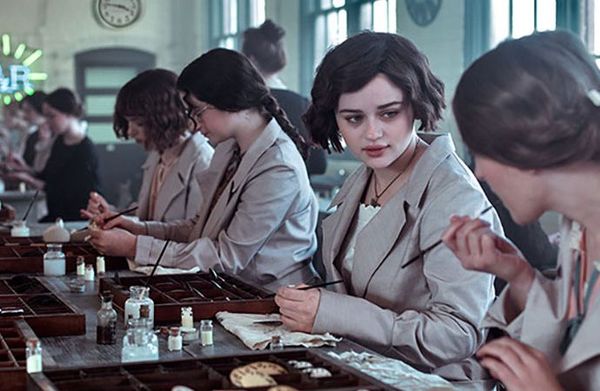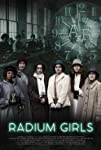Eye For Film >> Movies >> Radium Girls (2018) Film Review
Radium Girls
Reviewed by: Jennie Kermode

"If you want horror, just look at the real world," Cannibal Holocaust director Ruggero Deodato said to me once. "Just look at what we do to each other."
In 1917, US Radium opened the first of three factories for the manufacture of watches with semi-luminous dials, initially for use by soldiers fighting in the trenches in the Great War. Located in Orange, New Jersey; Ottawa, Illinois; Waterbury, Connecticut, each employed around 100 workers - most of them women, who had few employment options - to paint the dials by hand. Many of these workers got into the habit of licking the tips of their brushes in order to paint neater digits. Many of them developed anaemia, lost teeth, suffered spinal erosion and necrosis of the jaw, and died when they were still in their twenties or their teens.

Loosely based on real events (the names and a few minor details have been changed, mostly in order to tighten up the narrative), Lydia Dean Pilcher and Ginny Mohler's film tells the story of a group of young women who decided to challenge the company in court after learning what was happening to their bodies. It situates this in the context of the burgeoning civil rights movement, with 17-year-old heroine Bessie (Joey King), who has already lost one sister and is losing another, gaining a new perspective on the world around her as she engages with the activist community. This gives a certain weight to its release shortly before a US election, but it doesn't need to work to push a message. The facts speak for themselves. This was the case that first inspired the introduction of meaningful safety regulations in US workplaces, and it's one of the strongest arguments for them that there has ever been.
The trick to working with material like this is to make sure that one doesn't overdo it. If anything, Pilcher and Mohler strip back the real horror of the story. Some of the more grotesque damage done to the workers isn't referenced at all and we see make-up and bandages rather than confronting injuries directly. It's quite enough to hear from doctors about what they mean - even if this takes a while to happen. Before the women know what's going on, they have to deal with the cover-up, with its own particular brand of ugliness (which again has parallels in the politics of today). This is the first of several attempts to dissuade them from standing up for themselves.
Despite the focus on legal matters, actual courtroom scenes are kept to a minimum so that the testimony we hear carries maximum force. King paces her performance well, knowing when to lead a scene and when to make room for the audience to focus on the larger themes. There's good ensemble work elsewhere which helps to create a sense both of the complexity of the process and the scale of the issue. Sylvia Grieser's costumes do wonderful work to establish the time and place whilst telling us something about the class issues involved in the central conflict. They emphasise the young women's concern with looking after their appearance (in real life, some used radium as make-up) which makes the horror of what radiation sickness will do to them more acute.
It's unfortunate that the very last (written) line of the film reflects obvious ignorance - one assumes that it bypassed the script editor. Elsewhere the research is solid and the writing right on point. The arc of the story is a familiar one for this type of fare but that doesn't weaken the film's bite.
Reviewed on: 19 Oct 2020















